
A silversmith is a metalworker who crafts objects from silver. The terms silversmith and goldsmith are not exact synonyms, as the techniques, training, history, and guilds are largely the same but differed in that the end product may vary greatly.

John Wigham Richardson was a British shipbuilder on Tyneside during the late 19th and early 20th century.

Guy David Innes-Ker, 10th Duke of Roxburghe, was a British aristocrat.
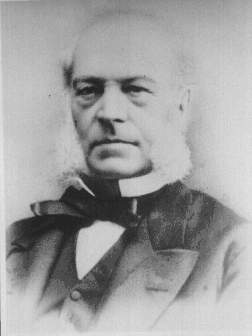
Edward Headlam Greenhow FRS, FRCP was an English physician, epidemiologist, sanitarian, statistician, clinician and lecturer.
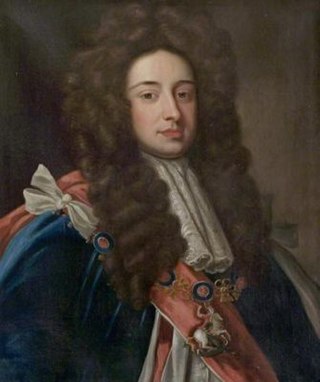
John Holles, 1st Duke of Newcastle was a prominent English peer and politician.
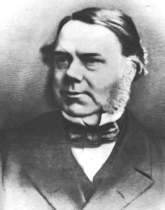
Charles Frodsham was a distinguished English horologist, establishing the firm of Charles Frodsham & Co, which remains in existence as the longest continuously trading firm of chronometer manufacturers in the world. In January 2018, the firm launched a new chronometer wristwatch, after sixteen years in development. It is the first watch to use the George Daniels double-impulse escapement.
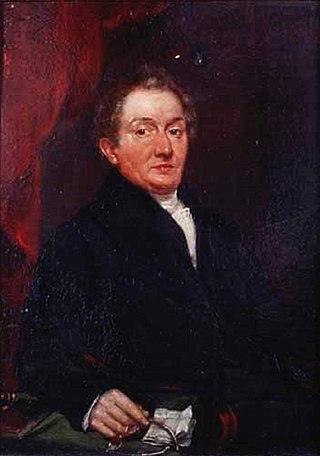
Paul Storr was an English goldsmith and silversmith working in the Neoclassical and other styles during the late eighteenth and early nineteenth centuries. His works range from simple tableware to magnificent sculptural pieces made for royalty.

Robert Edgar Stone (1903–1990) was an English silversmith who worked in the mid-20th century and was noted for hand-crafted commissions.

Sir Edward James Harland, 1st Baronet, was an Ulster-based English shipbuilder and politician. Born in Scarborough in the North Riding of Yorkshire, he was educated at Edinburgh Academy. In 1846, aged 15, he took an apprenticeship at the engineering works of Robert Stephenson and Company in Newcastle upon Tyne. Afterwards he was employed in jobs in Glasgow and again in Newcastle, before moving to Belfast in 1854 to manage Robert Hickson's shipyard at Queen's Island. Four years later he bought the yard and renamed the business Edward James Harland and Company. In 1861 he formed a business partnership with Gustav Wilhelm Wolff, his former personal assistant, creating Harland and Wolff. Later, Harland recruited William James Pirrie as another partner. Edward Harland, Gustav Wolff and William James Pirrie maintained a successful business, receiving regular orders from the White Star Line, before Harland's retirement in 1889, leaving Wolff and Pirrie to manage the shipyard.

F. H. Faulding & Co was a pharmaceutical company founded in Adelaide, Australia, in 1845 by Francis Hardey Faulding, a native of Swinefleet, near Goole in Yorkshire, son of Francis Faulding, a surgeon.
Hersey & Son is a company founded in Clerkenwell, England. The company is a noted firm of Silversmiths with a history dating back to 1955 when Michael Hersey started his apprenticeship and to 1971 when he and David Mills founded the firm.
Robert Lindsay Galloway was a Scottish mining engineer and author, the son of William Galloway (1799–1854), a Paisley shawl manufacturer and coal master and Margaret Lindsay (1818–1902) daughter of Thomas Lindsay, a Glasgow brewer. He was born in Paisley, Scotland
George Pickering (1758–1826) was an 18th-century poet and songwriter, born in Simonburn. His most famous work is probably Donocht Head.

William Kay J.P. was a businessman and politician in the early days of the colony of South Australia.
William Barnard Clarke (1806–1865), sometimes mis-written Bernard, was an English architect, cartographer, archaeological writer and art collector, numismatist and literary translator. He was the founding president of the Architectural Society of London, 1831, and supervised the restoration of the Eleanor Cross at Waltham Cross in 1831–1832. Producing a celebrated series of maps or plans of European and Russian cities, and taking a strong interest in the discoveries at Pompeii, he travelled much in Europe and from the 1840s had his home and collections in the Grand Duchy of Baden. In 1865 he published an English translation of Goethe's Faust. He was an elder brother of the artist Harriet Ludlow Clarke, and a brother-in-law of Henry Bellenden Ker.
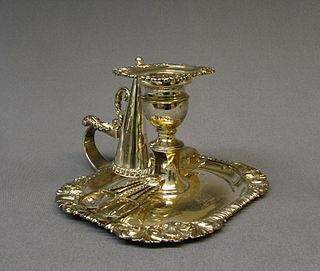
Rebecca Emes was an English silversmith, known for her household silverware.
Thomas Bigge (1766–1851) was an English political writer and activist. In his later life, he was a partner in the goldsmiths Rundell, Bridge & Co.
Edward Barnard and Sons was a firm of British silversmiths. They created the Lily font, a large silver gilt baptismal font used in the christening services of members of the British Royal family.
Sir Robert Kirk Inches was a Scottish goldsmith and silversmith. He co-founded the jewellers Hamilton & Inches and served as Lord Provost of Edinburgh from 1912 to 1916.
Dorothy Langlands was an English silversmith.














